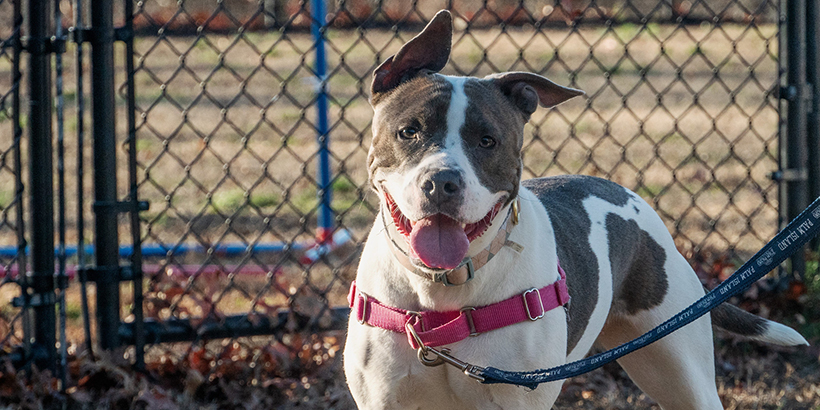
Barrier frustration, sometimes called barrier aggression, can be seen in dogs that come from a shelter environment, but it can also develop in dogs who have been in a home all of their lives. This behavior is triggered by any object that a dog feels is a barrier keeping them from something they want. This can be as simple as a door, a window, a fence, or even a leash. A dog with barrier frustration may begin to act unruly when they see a certain stimulus. The stimulus can vary for each dog, and sometimes there can be multiple.
What is barrier frustration?
- Barking, lunging or growling at a stimulus while being held back by a barrier (gate, door, leash, etc.).
How to manage barrier frustration:
- First, find what stimulus your dog reacts to and what barrier causes the reaction.
- Once you know what contributes to the reaction, you need to find your dog’s threshold (the closest distance the dog can be to the stimulus without reacting).
- Stock up on small pieces of your dog’s favorite treat.
- When your dog first sees the stimulus that causes them to react, reward the dog immediately, before they begin to react.
- If the dog is already reacting, the stimulus is too close, and you need to increase the distance between the two.
- If this behavior occurs behind a fence, window or door, you may need to recruit a friend to help you by playing along as the stimulus.
- During each session, the dog should be given small treats immediately and continuously when they see the stimulus without reacting.
- Eventually, this will begin to teach the dog that being non-reactive to the stimulus means they get a reward, and they are less likely to react with more practice.
- If a stimulus pops up that you were not expecting, simply guide your dog to a quiet area to calm down and treat the dog once they settle back down.
- This can involve a lot of practice and may take a great deal of time to improve. Be patient, and don’t give up!
Things to remember:
- When it is not training time, there should be no access to the stimulus.
- Keep sessions short, about 10 minutes each when you’re first starting out.
- Use very high-value treats for your dog (sometimes this means people food that is safe for dogs—check with your veterinarian first).
- Always use a calm, gentle tone of voice.
- Punishment can exacerbate the issue.
- If you begin to get frustrated, simply end the session and try again later.
- Keep things fun. Reward the dog with treats as well as praise.
- If this behavior is caused by multiple stimuli, each stimulus will likely need its own training sessions.
